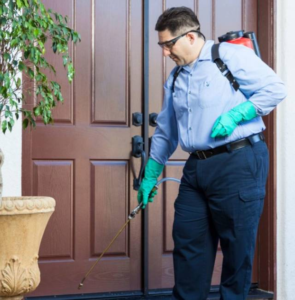Home buying and selling are some of the largest financial transactions most people will make in their lifetimes. So it’s important to have someone with experience and knowledge on your team.

Realtors are licensed real estate professionals who belong to the National Association of Realtors (NAR). The NAR’s Code of Ethics includes 17 Articles and underlying Standards of Practice.
Real estate professionals have in-depth knowledge of the local market. They can help you find homes that fit your needs and budget, negotiate prices on your behalf and handle the extensive paperwork involved in real estate transactions. Realtors also have access to a wide variety of resources that the general public does not, including MLS databases that provide detailed property information, including listing histories and sales data.
Buyers often have questions about the area in which they are interested in buying a home, such as school districts, crime rates and proposed zoning changes. Real estate agents can answer these questions and provide information about the community that may not be available online, such as details about restaurants, shopping and entertainment options.
If you are selling a home, a Realtor can help you price it competitively by conducting a comparative market analysis that takes into account recent sales, neighborhood trends, amenities and other factors that influence pricing. They can also provide guidance on preparing your home for sale and recommend home improvements that will boost your home’s appeal to potential buyers.
Once you’ve found a home that meets your criteria, your Realtor can help you complete the process by recommending other professionals to assist with mortgage financing, home inspections and closing procedures. They can also answer your questions about the neighborhood and help you navigate any roadblocks that arise, such as problems with the title or unforeseen maintenance issues.
As a member of the National Association of Realtors, realtors are required to abide by a code of ethics that requires them to treat all parties fairly and honestly. This includes avoiding a conflict of interest, disclosing information about the properties they are selling and not disparaging competitors. Local realty boards enforce the code of ethics, and violators can face fines or even expulsion from NAR.
They Can Help You Find a Home
One of the key benefits of Realtors is that they have a firm grasp of the local real estate market, including current home prices, zoning ordinances and other pertinent information. This knowledge can help you avoid expensive mistakes that may occur if you aren’t familiar with the area.
If you’re in the market for a new house, you can count on your Realtor to find properties that match your criteria. They can also assist you in determining how much house you can afford, and recommend ways to save for a down payment. A good Realtor will not waste your time showing you homes that are outside your price range, and they’ll be honest about which properties are worth visiting.
When you’re ready to make an offer, your Realtor will help you negotiate the price and terms of the property. They’ll also assist you with the home inspection, financing and other necessary paperwork. They’ll work diligently to ensure your home buying experience is as stress-free as possible.
Another important thing to keep in mind is that Realtors are members of the National Association of Realtors (NAR), which means they abide by a Code of Ethics set forth by the organization. Realtors who don’t adhere to the Code of Ethics risk losing their NAR membership, and can face disciplinary action from local real estate boards.
A real estate broker is a licensed professional who works independently from a Realtor, but can also be affiliated with a brokerage. Brokers usually have more administrative duties than agents, and can perform a variety of real estate services like listing homes for sale or finding buyers for the listings they represent.
In addition to paying NAR dues, Realtors must also pay a commission to their brokerage and the agent who helped them find a home or sell their previous one. This helps support NAR’s lobbying efforts at the state and national levels, as well as funding research into housing trends and markets, and providing education and resources for their members.
The term Realtor is always capitalized, and for good reason. It’s a registered trademark of the NAR, and indicates that the person using the title is a member of the organization and subscribes to its standards and code of ethics.
They Can Help You Sell Your Home
While a Realtor can help you buy a home, they also have the skills and resources to help you sell your current property. They can guide you through the process, from listing your property to closing on the sale. They have a strong network and can recommend home repair experts, inspectors, title and escrow specialists and more. Using their knowledge of the market, they can advise you on how to price your property and set a realistic timeframe for selling.
A good agent can use both science (comparisons of recent sales) and art (their experience, intuition and local market knowledge) to determine the right asking price for your property. They can even help you declutter your home and stage it in a way that makes it more attractive to buyers.
Oftentimes, homes need to be repaired or updated to meet buyer expectations. A Realtor can give you a list of contractors, repair estimates and their history of performing work in your neighborhood. They can also provide you with information about utility costs, municipal services and facilities and proposed zoning changes that could affect a potential buyer’s decision to purchase your home.
If you’re in a hurry to sell, your real estate agent can put together a “quick sale” plan that will make your home more attractive to buyers. This can include discounts, incentives or other strategies to speed up the process.
Once you’ve found a buyer, your Realtor can help you negotiate the terms of the contract, which may involve repairs, credits or adjustments to the sale price. They can also verify that the buyer has enough money to afford your home and arrange financing. Finally, they can help you transfer utilities and cancel your homeowner’s insurance.
Whether you’re buying or selling, your Realtor will be your most valuable resource. Make sure you find a Realtor who shares your values, understands your business goals and can deliver on their promises. Ask for references and be sure to read reviews before making your choice. Also, make sure your real estate agent’s fiduciary duty to protect your interests is clearly defined in writing.
They Can Help You Find a Loan
Realtors often refer clients to lenders they trust. This helps both parties build their relationships and generate more business. The relationship between a lender and real estate agent is critical to the success of a loan application, as it will determine whether or not the client can afford to purchase a property. A strong relationship between the two parties will allow them to work together and provide an excellent customer experience.
Realtors value lenders that are reliable, transparent, and responsive to their clients. They also want to partner with lenders who have a diverse product offering, as this will allow them to better serve their clients’ needs. Additionally, realtors prefer to work with lenders who are willing to attend open houses and showings. This shows that the lender is dedicated to their clients and the community.
Whether it’s an email, TikTok video, Instagram reel, or podcast, it’s important for mortgage marketers to reach out to their realtor partners. They can offer them content they can share on social media, which will help them grow their networks while also building trust. This may help them get more referrals down the line, which is something all lenders need.
In addition to networking, lenders can host educational seminars and webinars for realtors. This will help them learn more about the mortgage process and how it can benefit their clients. This will give them an edge over their competitors and help them stand out to their clients.
It’s also important for loan officers to keep in mind that the Realtor commission is a significant portion of the sales price. This means that a high-quality, experienced Realtor can make a huge difference in the sale of a home. This is why it’s important for loan officers to treat their Realtor partners with respect and appreciation.
The real estate industry can be confusing, especially for people who are new to it. For example, there are many different terms and jargon that are used regularly. This can lead to confusion and misunderstandings, which is why it’s important for all parties involved to be on the same page about what each term means. This will ensure that everyone has the same understanding and can speak about the real estate process in a way that is clear and concise.


